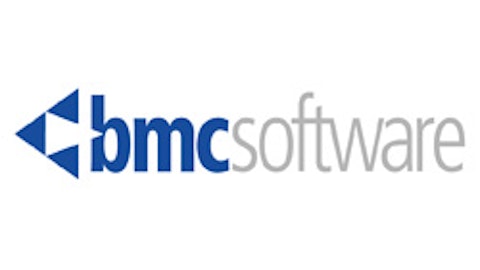Sales strategy
SolarWinds Inc (NYSE:SWI)’s average selling price (ASP) decreased significantly in its latest quarter. The company believes this decrease suggests its sales reps are above capacity and selling fewer products per transaction because they feel rushed. Each sales rep closed on average 85 transactions last quarter, which is greater than the company’s goal of one closed sale per business day, or 65 per quarter. The company plans to combat this by hiring new sales reps, who should be fully trained within 30 days and able to help increase both sales volume and average price per transaction nearly immediately. The risk is that new sales hires will not be effective contributors within 30 days such that personnel costs will rise without a significant increase in revenue.
In contrast, Splunk Inc (NASDAQ:SPLK) spends a significantly larger percentage of revenue on its sales team, nearly two-thirds of which is in the field, meeting face-to-face with prospects and generating demand. Splunk’s product requires greater domain expertise and has a longer, more complex sales cycle than SolarWinds. As such, sales reps take from 6 to 12 months to develop into full contributors. Due to the investments in its product and sales force, Splunk does a better job of closing big deals, with more than 100 deals in the most recent quarter above $100,000, including numerous deals above $1 million, while very few of SolarWinds’ deals reach six figures, and no deals reach seven figures.
Splunk is shifting its focus to C-level executives and VPs with the goal of offering services that solve a broad range of use cases, much more than just IT infrastructure logging. An example of an upscale use case would be security as a cloud-based service, where Splunk adds value recommending best practices from its unique view of security trends across its large customer base. SolarWinds Inc (NYSE:SWI), on the other hand, specifically creates lower-priced products that it can target to rank and file IT professionals (the System or Network Administrator) who can purchase product with only 1 level of management approval, resulting in a faster sales cycle.
Conclusion
In summary, these two companies represent opposing approaches to selling IT management and security software. One aims to keep costs low, increase sales transactions, sell to front-line IT professionals, and only enter mature markets where it can undercut competitors. The other is on the vanguard, spending large sums on sales, marketing, and R&D, defining a new market where it will solve business executives’ increasingly broad use cases, and moving away from simple log collection, presentation, and storage.
Both are executing well, quickly increasing revenue through new customers and maintenance renewals, and have significant industry winds at their back. As the world looks to automate the management of increasingly complex networks and discern insights from massive amounts of unwieldy data from dissimilar sources, both companies stand to gain.
Jason Earley has no position in any stocks mentioned. The Motley Fool has no position in any of the stocks mentioned. Jason is a member of The Motley Fool Blog Network — entries represent the personal opinion of the blogger and are not formally edited.
The article SolarWinds vs. Splunk: A Tale of Two Data Management Companies originally appeared on Fool.com and is written by Jason Earley.
Copyright © 1995 – 2013 The Motley Fool, LLC. All rights reserved. The Motley Fool has a disclosure policy.


